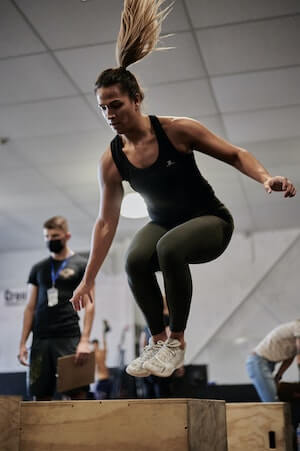Fitting workout routines into your weekly schedule can be a juggle. You want to make the best use of your time and still get results.
A good workout plan must take into account different variables. It’s got to consider not only your time constraints but your workout focus and recovery days. That’s going to include your high-intensity sessions, weights or cardio workouts.
Sometimes you’re going to fit in a 10-minute workout, and other times you’ve got an hour. Does it matter?
Are fast workouts effective? We’ve had a look at the different styles as part of our health and fitness education series.
Slow Or Fast Workout Routines: How Are They Different?
It is not just a matter of minutes.
A workout in which you give your best in a short period and another in which you work more slowly can be just as intense. But, in each of them, the body’s response is different. Being aware of the differences will help you with your planning.
Fast Workouts
In a fast and intense workout routine, a large number of calories can get burned.
When you are involved in an intense, fast workout, your body needs a lot of energy. This energy consumption is what burns a large number of calories.
This is what happens, for example, in an aerobic circuit training in cross fit session or during the routine of high-intensity interval training (HIIT).
Exercising in this way means that a couple of things are happening. Your heart rate can be raised as high as 80% – 90% of your cardiovascular capacity. Plus, raising your metabolic rate.

This means that the body can continue to burn calories and fats, even after the session finishes.
Additionally, it is important to keep in mind that, after such an intense effort, our body will continue to demand energy to be able to recover.
After finishing your workout exercises, the body will still be bringing to the muscles the extra oxygen needed, working on the elimination of excess lactic acid generated.
It will also bring extra oxygen to simply contribute to the normalization of respiration, body temperature and heart rate. All these functions translate into the need for higher caloric expenditure.
Slow Workouts
In long and slow exercises, of at least 30 – 40 minutes of exercise, our body works differently.
The effort may seem less intense, but, in reality, it takes a long time, so the result can be just as satisfying.
In this case, our body ends up depleting direct energy reserves (glucose) and has to resort to accumulated fats to maintain physical activity.
Plus this can become the ideal training for you if the focus of the workout is to reduce adipose tissue and gain muscle definition. If you are looking for this, you should extend your sessions to 60 minutes or more, since it is in that time frame when fat burning increases the most.

Slow Or Fast Workout Routines: Pros And Cons According To Objectives
When deciding to train quickly or slowly, there are a series of considerations so that you get the most out of each session and get closer to the goals you have set for yourself.
Fast Workout Routines
- The short and intense training is not suitable for everyone. It requires a prior good physical shape, precisely because it demands the maximum from your body in a few minutes. If you are not sufficiently prepared, the risk of injury with this way of exercising is greater than if you choose to do it more slowly.
- Due to the caloric expenditure generated during and after exercise in HIIT training, this type of training, intense and fast, is the best if your goal is to lose weight. Many people achieve great weight loss results with this form of workout once they adjust to the high demands on the body.

Slow Workout Routines
- On the other hand, if you aim to work on strength to gain muscle definition, slow training is the way to go. It will not only help you achieve your targeted muscle gains, but it will also help you build the weight resistance you can handle by improving the execution technique of each exercise.
- In sports that combine speed and endurance, such as running and soccer, the ideal situation is to combine short and intense workouts with those that maintain a moderate intensity for longer. This way you will be faster and you will also be able to run for longer. These sports work best when you do workouts with a mix of cardio and strength exercises.

Get The Best Out of Your Fitness Efforts
As you can see, both the fast and slow workout routines can help you achieve your goals. You just have to put into practice the most appropriate one that works for you each time.
So, if you are unsure about what you should do, always talk it over with someone like a personal trainer. Give these a go and find what works best for you.





